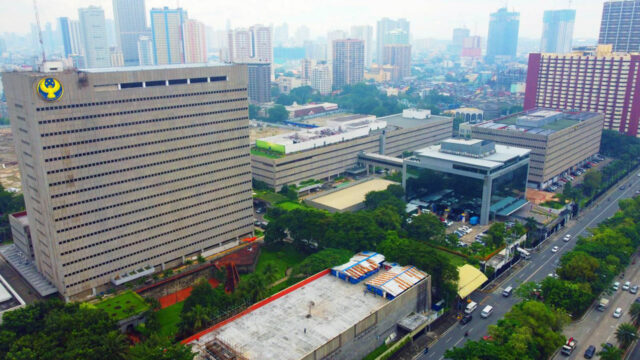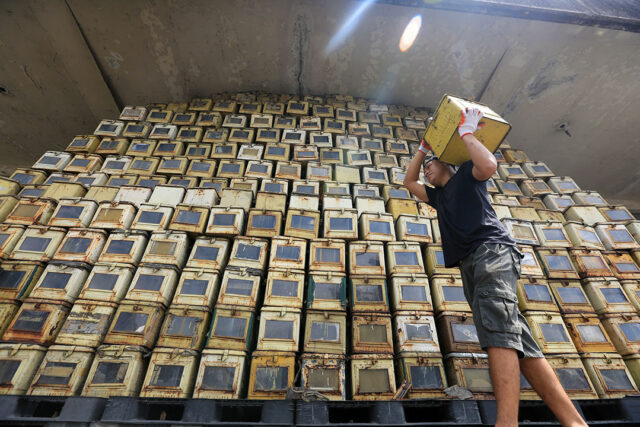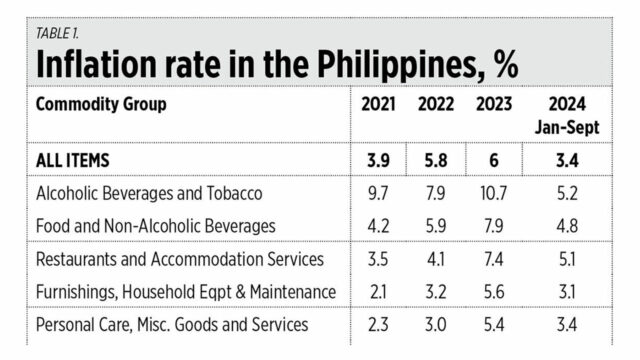Making our country resilient: Lessons from Sweden and Ukraine
The 29-page summary paper published by the Swedish Civil Contingency Agency (SCCA/MSB) late last year entitled “Building Resilience for the Future: Lessons from Ukraine” is an eyeopener to many of us who are concerned and fearful about the future of our country. The aggressive and non-stop bullying and harassment by an unmentionable country not just in the West Philippine Sea (WPS) but in other aspects of our lives as a nation and as a people (if we believe what is coming out in the media) such as espionage, cyber security, human trafficking, money laundering etc. as well, has created a serious situation of nationwide volatility, uncertainty, complexity, and ambiguity or VUCA. This can deteriorate quickly into a catastrophe. The Swedish article helps us put things in perspective.
What did the article say about the lessons from Ukraine? The paper starts with the statement that “Ukraine’s continuing ability to stand up against Russia’s invasion starting in 2014 with the illegal annexation of Crimea and the two-year (and counting) full-scale invasion of Ukraine highlights the importance of ensuring whole-of-society resilience.” Ukraine has demonstrated its ability to maintain the continuity of vital societal functions such as the provision of food, water, electricity, telecommunications, and transportation. Meanwhile, the population has helped to protect the country from cyberattacks and propaganda campaigns, and volunteer organizations, companies, and local communities have made significant contributions to the country’s capacity to defend Ukraine from the Russian aggression.” This is whole-of-society in action!
And so, what are the lessons learned from Ukraine? There are six, according to the paper:
1. Strategic communications — a key capability;
2. Achieving a willingness to defend — unleashing the power of individuals and civil society, (This is the Power of We);
3. Investing in cybersecurity — from individual awareness to international cooperation;
4. Involving the private sector in solving problems — innovation, adaptation, and flexibility;
5. Emergency and rescue services — a valuable asset with a high symbolic value; and,
6. Culture fosters resilience and unity — safeguarding cultural heritage and social infrastructure.
Readers are encouraged to read the whole 29-page article as it explains in detail the six lessons from Ukraine. (Google “MSB Report on Resilience in English”).
Last month, fellow Management Association of the Philippines (MAP) members Popoy del Rosario, Alex Cabrera, and myself were part of a contingent of the Armed Forces of the Philippines (AFP) Multisectoral Governance Council (MSGC) that was flown over most parts of the West Philippine Sea with a brief stopover at the Pagasa Island where we were met by a large group of soldiers and civilians from the various uniformed services (Army, Navy, Air Force, Coast Guard, and the Philippine National Police).
Theirs was a lonely posting but they accepted their assignment wholeheartedly. Morale, despite the remoteness and loneliness of the place, was surprisingly high. They are already unsung heroes. We were told that there were hundreds of civilians who populate the island and who live spartan lives.
We were then flown to Palawan to do a courtesy call on provincial government officials after which we were given a comprehensive and thorough briefing by a military officer of the Western Command on the actual situation in the WPS.
One thing we learned from the briefing was that the situation is much more dangerous than what we are reading from news reports. The frequency of the bullying and aggression is much more than what are being reported. (By the way, it was only when we were at the WesCom headquarters that the pilot of our plane informed the group that while at the vicinity of the WPS, two planes were tailing ours and one challenged our pilot. When we asked him what he did, his response was: “I challenged him back”).
I relate this experience because it was only then that I realized that we and our country are in grave danger from the bully and aggressor. More provocation or even an accident can trigger a greater conflict and, sad to say, we, the people and the country, are not prepared for the escalation of hostilities. That is why I was appreciative of an MAP colleague and friend, Cliff Eala, who shared with me the Swedish Resilience article. It got me to think about Russia and Ukraine and the unnamed superpower bully and the Philippines.
Russia’s population is roughly 144 million, about 3.8 times that of Ukraine’s 38 million. The GDP of Russia stands at $2 trillion, 11 times bigger than Ukraine’s GDP of $179 billion. Russia is vastly superior in size and economic resources. On the other hand, our unnamed Superpower bully has a population 12 times the Philippines’ (1.4 billion vs. 119 million) and an economy 13 times larger ($18.6 trillion vs. $1.4 trillion). We obviously do not have the headcount nor the economic resources to stand up to the bully. Like the Ukrainians, we are the heavy underdogs, us probably much more so.
And so, what chances do we have in an escalated conflict? We learn from Ukraine. Review the six lessons mentioned earlier. In short, “Be Resilient!” What can we citizens do to avoid annihilation? We need to prepare. Not for war but for survival. What are the priorities?
I will start with prayers. The Catholic Bishops’ Conference of the Philippines has suggested the “Oratio Imperata for Peace.” Catholics have been praying this during daily masses for many months now. Other denominations may have already prescribed their own prayers for peace. Whichever prayer for peace, pray we must.
And, perhaps, if we really want peace, aside from just praying for it, we can offer personal sacrifices to put more resolve to those prayers. I remember in the past when South Korea was going through tough times, its citizens offered their personal jewelry (gold) to be melted for use by their government to help the country survive the crisis. We can do the same as a people. Besides, sacrifice is always good for the soul. And so, if we offer sacrifices for our country, it will also be good for our souls.
And then, and only then, we act. Prayers, sacrifice and action — in that order.
First of all, food. Food supply and food security. We can start fixing our generations-old malpractices in agriculture and aquaculture so we can achieve more and higher productivity in staples, vegetables, fruits, poultry, swine, fish, etc. We can start slowly accumulating non-perishable canned goods without creating panic shopping. We can start urban gardening and produce more food than we need so we can share with neighbors who are going hungry. And convince greedy middlemen to stop exploiting the farmers!
Secondly, let us conserve our water resources. Stop being wasteful in water consumption. Invest in cisterns or storage facilities for water. Try rain gathering methods. Go slow on washing the cars and watering your gardens daily. Take no more than three minutes to shower.
Third, conserve energy and electricity. Judicious use of electricity, on a collective basis, can result in very substantial savings and can buy us more time to survive the less-power days. Stop irresponsible drivers from idling their cars while waiting for their bosses in parking lots. And bosses, tell your drivers so. If you can afford it, invest in a solar system for the house with a standby generator for brownouts.
Fourth, learn how to do CPR, first aid, and embrace a healthier lifestyle with proper nutrition and regular exercise. When you are healthy you will not need the hospital bed that might be needed for the victims of war.
Fifth, volunteer to be part of the reserve force or even the civil defense force. Go on training. Part of Ukraine’s resilience (and Israel’s, too) is the huge number of their reserve volunteers. Martial arts can be useful so learn the basics.
Sixth, be vigilant. In your communities, whether barangays, villages, or condominium buildings, look out for suspicious characters who may be sleepers of a liberation army. “The price of Liberty is eternal vigilance,” said Jefferson.
These are just some of the things that the citizens can do to help us survive as a country and as a people. And what about the government, you may ask. What should the government do, and what should government officials do?
We have a national budget of roughly P6 trillion. If media reports are correct in saying that at least 40% of the national budget or P2.4 trillion is lost annually to corruption, the first suggestion therefore for the corrupt and dishonest government officials is to moderate their greed. Huwag naman cuarenta porsyento (not 40%). Be patriotic — no more than 10% for you, 30% for the country. We need billions upon billions to modernize our military, to build more schoolhouses that can be converted into evacuation centers during conflicts, to secure food, water, and electricity (e.g., to buy out the interests of a foreign country in the National Grid Corp. of the Philippines), and to build more hospitals to take care of the wounded and the sick. Besides, if our country is run over by the bully, they will execute the corrupt and the thieves anyway. So, please moderate the greed. You might be saving your own skin.
The problem with the government coming up with a survival plan is that it will appear to the bully that we are preparing for war and, being a bully, they will consider that as a hostile act and they will act accordingly. How many times have they rammed our ships and boats and they argue perversely that we were at fault?
We leave the military preparations to the military. We have a brave, gallant, intelligent, patriotic, and committed armed forces. I have faith that, as we speak, they are continually reviewing the options and avoiding committing acts that will be misinterpreted as provocation for hostilities without compromising their positions. Besides we have allies under our mutual defense treaties who will come to our assistance.
The responsibility for the preparation for survival and the drive for resilience probably rests on our Secretary of Department of National Defense (DND) and his undersecretary for Civil Defense. If the country needs to craft a survival strategy (not to prepare for war but a roadmap for survival), perhaps the President can form a Civil Defense Cluster composed of department secretaries to craft and implement said survival strategy. This group, to be headed by the DND Secretary can include the secretaries of the Departments of Agriculture, Trade and Industry, and the National Water Resources Board for food and water, the Department of Energy, Public Works and Highways, Transportation, Information and Communications Technology (for energy needs, infrastructure, transportation, and telecommunications), Health (for retrofitting the hospitals), and the Department of Education and Commission on High Education for schools. This group should be given no more than three months to produce a Civil Defense and Survival Roadmap that will be used in case the imminent threats of conflict are elevated.
In summary, to survive the looming crisis, we need the whole-of-society approach to resilience as the Swedes are suggesting. Just as important, we need our people to be united and act as One Philippines fighting for the survival of our country. It should begin today.
God help us.
This article reflects the personal opinion of the author and does not reflect the official stand of the Management Association of the Philippines.
Rex C. Drilon II is the governor-in-charge of the MAP Cluster on ESG and Shared Prosperity and the vice-chair of Center for Excellence in Governance.
























